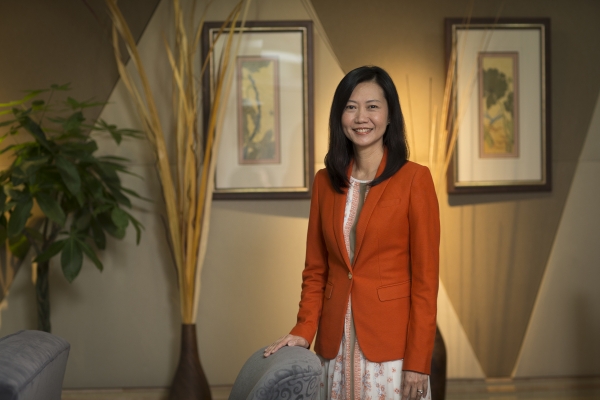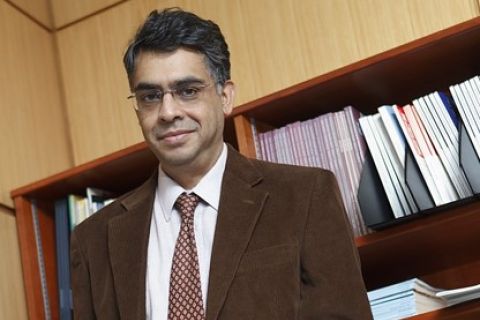
By Jovina Ang
SMU Office of Research & Tech Transfer – Effective government crisis communication is essential in a pandemic not only to engage individuals in disease prevention behaviours but also, to quell individuals’ unease and fear amidst media frenzy reporting a dangerous world spurred on by the wide and rapid spread of the novel coronavirus (COVID-19).
Since the start of the COVID-19 pandemic, the Singapore Government has been adopting a transparent, honest and timely approach to its communication strategy to inform and educate the public about the virus.
While there exists research showing the likelihood of individuals adopting disease prevention behaviours if they perceive a health risk or have a belief in a dangerous world, there does not exist any research showing the effects of individuals’ belief in a dangerous world and their perceptions of the effectiveness of government’s messages in disease prevention behaviours, of which, wearing masks, washing hands frequently and keeping social distances would apply in the COVID-19 context.
This is the reason why SMU Associate Professor of Corporate Communication (Practice) Yeo Su Lin decided to delve deeper into the issue.
Professor Yeo told the Office of Research & Tech Transfer: “While it has been shown that individuals’ belief in a dangerous world can lead to disease prevention behaviours, we did not know then about the combined effects of this belief and the perception of the effectiveness of government’s messages in adopting disease prevention behaviours.”
“COVID-19 has provided us an opportunity to study the influence of these two constructs, as well as effectiveness in driving disease prevention behaviours. As a communication researcher, I was naturally interested to further uncover the right mix of message characteristics, if any, that would motivate individuals to trust and comply with advice given by the authorities in a health crisis”, she added.
The research
To accomplish the objectives of the multi-disciplinary research, Professor Yeo and her two collaborators, Dr. Desiree Phua from A*Star Singapore and Professor Ying-yi Hong from the Chinese University of Hong Kong, had designed a robust mixed method quantitative and qualitative research methodology, comprising two studies.
The researchers first carried out a content analysis of 7,128 news headlines on COVID-19, published by the two major English press organisations – The Straits Times and Channel News Asia in March 2020, during the onset of the pandemic when the virus was starting to ravage across Singapore. This pre-study was aimed at validating the researchers’ presupposition that individuals were exposed to heightened awareness in the larger societal environment that the world today is dangerous.
This study showed the important role media play in shaping the public perception of COVID-19. With 90 percent of the news headlines framed to suggest that COVID-19 is a dangerous disease, the analysis confirmed that the media was indeed communicating messages that the world was in danger because of the pandemic.
The second study, which was the main study, proceeded to survey 453 participants. It included a sample that represented Singapore’s population ethnicity and people who were above 21 years of age.
This second study tested and analysed the relationship between the participants’ belief in a dangerous world, their engagement in disease preventive behaviours and their perception of the effectiveness of Singapore Government’s crisis communication at the onset of the COVID-19 pandemic in March 2020.
Insights from the research
The research showed that perceived effectiveness of the government’s pandemic communication trumped the effect of individuals’ belief that the world is dangerous. On one hand, the individuals’ belief in a dangerous world only contributed to disease preventive behaviors when the individuals did not perceive the government’s communication to be effective.
On the other hand, if individuals perceived the government’s communication as effective, they were likely to adopt disease preventive behaviors, regardless of whether they believed the world was dangerous.
Further analysis revealed that three characteristics of pandemic communication messages were key in motivating individuals to adopt disease preventive behaviours and these characteristics included informativeness, personal relevance, and objectivity. In other words, for public health messages to be effective, they need to be strategically calibrated to offer personally relevant messages that are informative and objective.
Implications from the research
There is one important implication from the research and Professor Yeo would like to reinforce that: “Effective communication with the right mix of message characteristics is the ‘lifeblood’ of the Singapore Government if the country hopes to better manage the societal impact of COVID-19 because it fuels public trust and it is capable of driving disease prevention behaviours.”
“Our government can enhance its communication effectiveness by providing messages that are informative and objective, as well as making it more personal and relevant to the different population groups”, she added.
“And one more thing… Given that the media plays an important role in shaping the public’s perception, I would urge communication professionals to be more proactive and work in lockstep with the media by providing timely updates including medically sound opinions and play a more active role in dousing fake news with truths in our highly complex media environment today. Clear communication, continuous engagement and dialogues (online and face-to-face) with publics to achieve mutual understanding within the limits of available knowledge are prerequisites needed to unite Singaporeans in a collective fight against COVID-19”, she continued.
Associate Professor Yeo Su Lin’s paper “The effects of dangerous world beliefs on COVID-19 preventive behaviours in Singapore: The moderating role of public health communication” is in press and will soon be published by the International Journal of Strategic Communication.
Back to Research@SMU Feb 2022 Issue
See More News
Want to see more of SMU Research?
Sign up for Research@SMU e-newslettter to know more about our research and research-related events!
If you would like to remove yourself from all our mailing list, please visit https://eservices.smu.edu.sg/internet/DNC/Default.aspx

